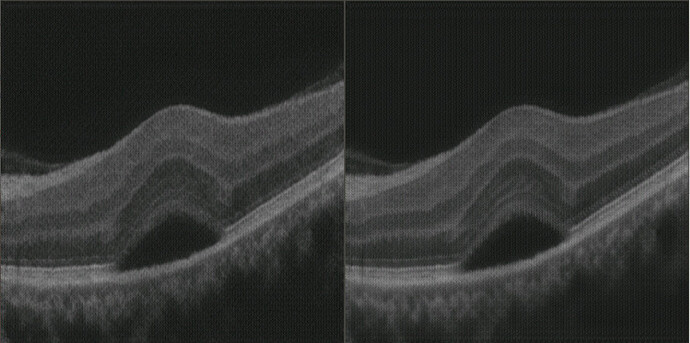In my denoising work, I use torch.optim.lr_scheduler.StepLR to adjust learning rate. But it seems different between scheduler.step() and scheduler.step(ave_train_loss) that I called in each training epoch’s end.
After training,I test both two models in same images, and get following result:
Figures in left and right are using
scheduler.step() and scheduler.step(ave_train_loss) respectively. I repeat several times to train and test in same situations, but get almost the same results.
I don’t find something interpretable about this question in source code. I think it should be no effect in StepLR scheduler when calling scheduler.step() with a parameter
class _LRScheduler(object):
...
def step(self, epoch=None):
# Raise a warning if old pattern is detected
# https://github.com/pytorch/pytorch/issues/20124
if self._step_count == 1:
if not hasattr(self.optimizer.step, "_with_counter"):
warnings.warn("Seems like `optimizer.step()` has been overridden after learning rate scheduler "
"initialization. Please, make sure to call `optimizer.step()` before "
"`lr_scheduler.step()`. See more details at "
"https://pytorch.org/docs/stable/optim.html#how-to-adjust-learning-rate", UserWarning)
# Just check if there were two first lr_scheduler.step() calls before optimizer.step()
elif self.optimizer._step_count < 1:
warnings.warn("Detected call of `lr_scheduler.step()` before `optimizer.step()`. "
"In PyTorch 1.1.0 and later, you should call them in the opposite order: "
"`optimizer.step()` before `lr_scheduler.step()`. Failure to do this "
"will result in PyTorch skipping the first value of the learning rate schedule. "
"See more details at "
"https://pytorch.org/docs/stable/optim.html#how-to-adjust-learning-rate", UserWarning)
self._step_count += 1
main of my code is following
# optimizer and scheduler
optimizer = torch.optim.Adam(model.parameters(), lr=1e-3)
scheduler = torch.optim.lr_scheduler.StepLR(optimizer, step_size=50, gamma=0.5)
if train_mode:
for epoch in range(1000):
ave_train_loss = 0
model.train()
for i, (image, label) in enumerate(train_loader):
optimizer.zero_grad()
image = image.to(device)
label = label.to(device)
output = model(image)
full_loss = critetion(output, label)
full_loss.backward()
optimizer.step()
ave_train_loss += image.size()[0] * full_loss.item()
ave_train_loss /= len(train_dataset)
scheduler.step(ave_train_loss)
